1. The Balloon Boy Hoax (2009)
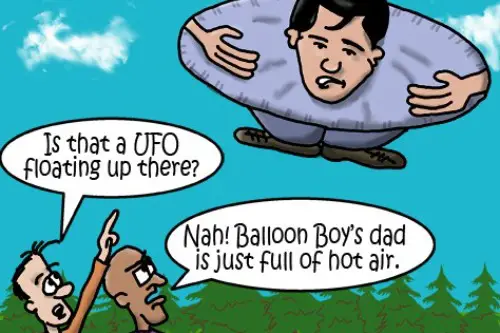
For a few hours in October 2009, the world held its breath, believing that a six-year-old boy named Falcon Heene was floating uncontrollably in a homemade helium balloon. News stations interrupted programming, tracking the balloon’s journey across Colorado while rescue crews scrambled to save him. When the balloon landed and Falcon was nowhere to be found, everyone feared the worst—until he was discovered hiding in his family’s attic. It turned out to be an elaborate stunt staged by his parents, who were hoping to land a reality TV deal.
The story dominated headlines, with people furious over being duped by what became known as the “Balloon Boy Hoax.” The Heene parents were convicted of false reporting, and the public quickly lost interest once the scandal played out, Reese Oxner from NPR explains. Falcon later admitted in interviews that he barely remembered the ordeal, while his parents maintained their innocence. What was once a massive media sensation is now just a weird footnote in early social media history.
2. The Y2K Panic (1999-2000)
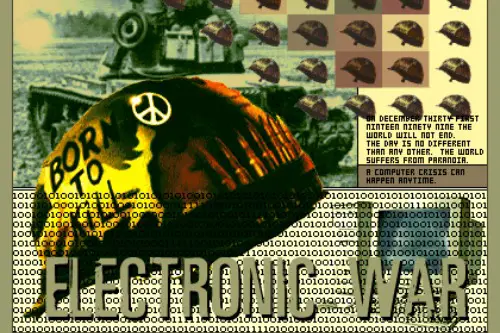
At the turn of the millennium, people genuinely thought computers might crash and send society into chaos. The fear was that older software, which used two-digit years, wouldn’t recognize “00” as 2000 and instead reset to 1900. Governments, businesses, and everyday people spent billions upgrading systems, stocking up on supplies, and even preparing for worst-case scenarios like power grid failures, according to Jack Mitchell from NPR. But when January 1, 2000, arrived, almost nothing happened, and everyone quickly moved on.
For a brief moment, Y2K felt like a global emergency, with countdown clocks and constant media coverage fueling the fear. Some people emptied their bank accounts, and survivalists built bunkers just in case the world fell apart. Once the dust settled, critics debated whether the panic was overblown or if the preventive efforts had actually worked. Either way, it became a punchline rather than a lasting historical crisis.
3. The Miracle on the Hudson (2009)
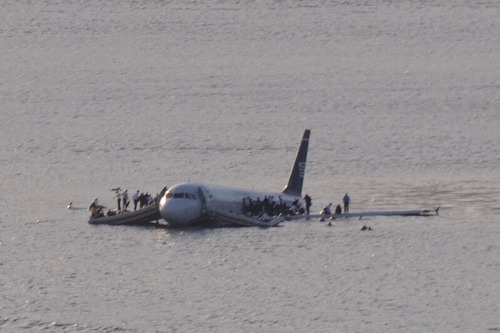
In January 2009, Captain Chesley “Sully” Sullenberger pulled off one of the most famous emergency landings in aviation history. After a bird strike disabled both engines of US Airways Flight 1549, Sully successfully ditched the plane in the Hudson River, saving all 155 people on board, according to Amy Tikkanen from Britannica. For weeks, he was celebrated as a national hero, with talk shows, a book deal, and even a parade in his honor. But as with many feel-good stories, public fascination faded as the next big event took over the news cycle.
Despite the incredible nature of the landing, the event is now mostly remembered through the 2016 Tom Hanks movie Sully. At the time, the crash-landing felt like something out of a Hollywood script, and people couldn’t stop talking about it. Yet today, it’s a piece of history most people don’t think about unless they’re watching reruns of the footage. It’s a reminder of how even truly inspiring moments can get buried under the next wave of headlines.
4. The Anthrax Attacks (2001)
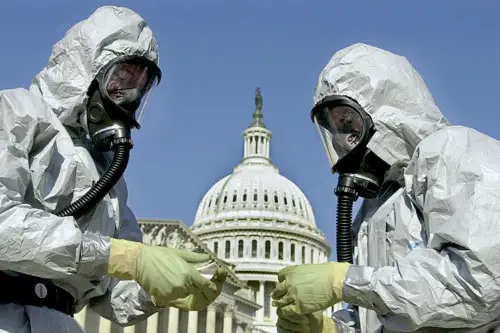
Just weeks after 9/11, another wave of terror struck the U.S. when letters containing anthrax spores were mailed to news outlets and politicians. Five people died, and 17 others were infected in what became one of the biggest bioterrorism scares in American history. At first, investigators suspected it was linked to Al-Qaeda, but years later, they concluded it was likely carried out by a government scientist working at a U.S. biodefense lab. The attacks dominated headlines and fueled national fear, according to Jack Seale from The Guardian.
The FBI eventually closed the case in 2010, blaming scientist Bruce Ivins, who had died by suicide in 2008. By then, most Americans had moved on, consumed by other national security concerns. Despite its impact, the anthrax scare doesn’t get talked about much today, even though it changed how the U.S. handles biological threats. If it happened now, in the age of social media, the public reaction might be very different.
5. The Boston Molasses Flood (1919)
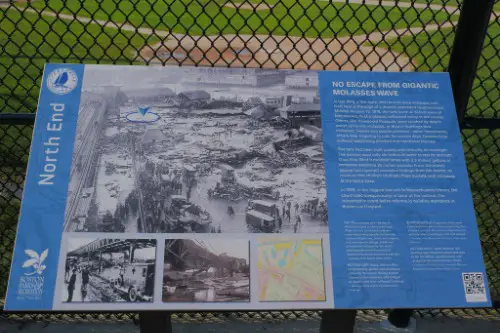
It sounds like a joke, but the Great Boston Molasses Flood was a deadly and bizarre disaster. In January 1919, a massive storage tank filled with 2.3 million gallons of molasses burst, sending a 25-foot wave of sticky syrup through Boston’s North End, the City of Boston explains. The flood killed 21 people, injured 150, and caused chaos as buildings crumbled and people drowned in the thick, slow-moving disaster. At the time, it was a major tragedy, but over the years, it became more of a quirky historical oddity than a remembered catastrophe.
The disaster led to major changes in industrial safety regulations, but it’s rarely mentioned in discussions of historic U.S. tragedies. Locals still tell the story, and some say you can smell molasses on a hot day where the tank once stood. But outside of Boston history buffs, few people think about the fact that molasses once terrorized an entire neighborhood. It’s proof that even the strangest disasters can eventually be forgotten.
6. The Missing Colony of Roanoke (1587)
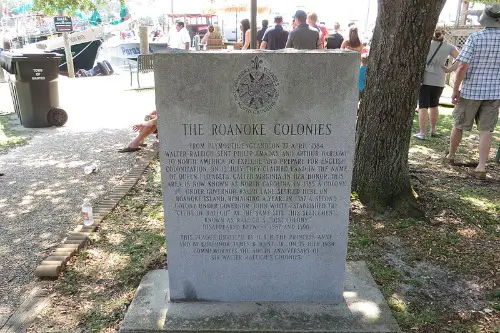
The story of the lost colony of Roanoke is one of America’s oldest unsolved mysteries. Over 100 English settlers vanished from Roanoke Island in what is now North Carolina, leaving behind only the word “CROATOAN” carved into a tree. At the time, it was a huge mystery, sparking theories about Native American attacks, assimilation, or even supernatural forces. For centuries, it was considered one of early America’s great historical puzzles.
Despite the endless speculation, Roanoke has mostly faded from public interest, overshadowed by other mysteries and forgotten settlements. Occasionally, new discoveries reignite the debate, but nothing definitive has ever been proven. What was once a legendary mystery is now something most people only vaguely remember from history class. Yet, it remains a fascinating piece of early American folklore waiting for a modern revival.
7. The 1977 New York City Blackout
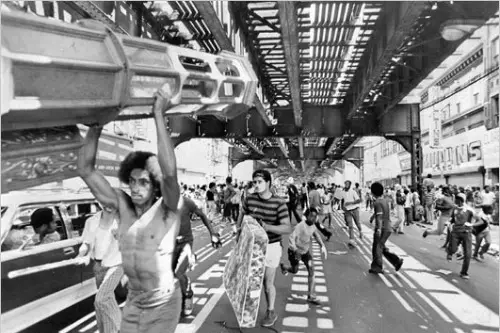
For one chaotic night in July 1977, New York City went dark, leading to widespread looting, fires, and general mayhem. Unlike previous blackouts, this one came during a heatwave and an economic downturn, fueling unrest. Over 1,600 stores were looted, more than 1,000 fires were set, and thousands were arrested as the city descended into near-total anarchy. The event was a massive turning point for New York, exposing tensions and economic struggles that had been simmering for years.
At the time, the blackout was a national story, capturing the chaos of the city in the 1970s. But as New York rebounded in the decades that followed, the event became just another chapter in the city’s gritty past. Today, most people remember the 2003 blackout more than the one in 1977, despite its much greater impact. It’s a prime example of how even major urban upheavals can slip from public memory.
8. The Exxon Valdez Oil Spill (1989)
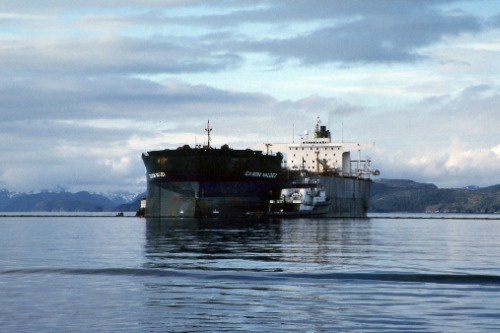
Long before Deepwater Horizon, the Exxon Valdez oil spill was the environmental disaster that shocked the nation. When the tanker ran aground in Alaska’s Prince William Sound, it spilled nearly 11 million gallons of crude oil, devastating wildlife and fishing industries. For years, the cleanup effort and lawsuits dominated headlines, making Exxon a symbol of corporate environmental negligence. It was a wake-up call about oil spills, but over time, the public’s attention moved on to other environmental crises.
Though it remains one of the worst oil spills in history, it’s rarely discussed today outside of environmental circles. Regulations were strengthened as a result, but public outrage faded as Exxon paid settlements and rebranded. If it happened now, with social media amplifying environmental activism, the backlash might be much bigger. Instead, it’s a cautionary tale that most people have long since forgotten.
9. The 2000 Florida Recount
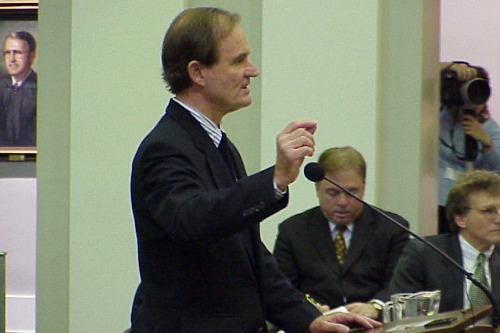
The 2000 U.S. presidential election between George W. Bush and Al Gore came down to just a few hundred votes in Florida. A controversial Supreme Court ruling ended the recount, effectively handing Bush the presidency, and sparking nationwide debates about election integrity. For weeks, the country was glued to their TVs, watching footage of officials inspecting “hanging chads” on paper ballots. It was one of the most dramatic election disputes in U.S. history, but once Bush took office, most people moved on.
At the time, the Florida recount felt like a democracy-shaking event, with some calling it a constitutional crisis. Many Americans were frustrated by how close the race was and how little they understood the complexities of the Electoral College. While the controversy lingered in political circles, everyday people eventually stopped thinking about it. In a world of faster news cycles and new political scandals, the 2000 recount has become just another historical footnote.
10. The Swine Flu Pandemic (2009)

Before COVID-19, the world was briefly panicked by the H1N1 swine flu outbreak in 2009. The virus spread rapidly, and governments scrambled to distribute vaccines, fearing a global health crisis. The U.S. declared a public health emergency, and for a while, it felt like the next great pandemic was upon us. But by 2010, the outbreak had largely fizzled out, and people quickly stopped worrying about it.
Despite infecting millions and causing thousands of deaths, H1N1 never reached the catastrophic levels some feared. The relatively low fatality rate, combined with vaccine efforts, helped keep the crisis in check. Still, for a brief moment, it dominated headlines, with people wearing masks and hoarding hand sanitizer. In hindsight, it was a preview of how the world would react to a real pandemic, but few remember it today.
11. The Johnstown Flood (1889)
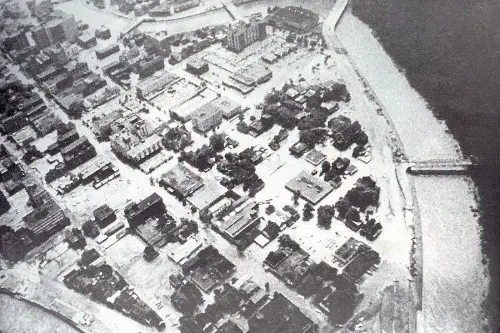
In 1889, the South Fork Dam in Pennsylvania collapsed after days of heavy rain, sending a wall of water crashing into the town of Johnstown. Over 2,200 people died in one of the deadliest floods in U.S. history, leaving entire neighborhoods wiped out. The disaster was a national tragedy, sparking outrage when it was revealed that the dam had been poorly maintained by wealthy industrialists. At the time, it led to major discussions about corporate responsibility and disaster preparedness.
For decades, the Johnstown Flood was remembered as one of the worst man-made disasters in American history. But as other natural disasters took center stage, it faded from public consciousness. Today, outside of Pennsylvania, few people talk about the flood, even though it was a turning point in engineering safety regulations. It’s a prime example of how even massive tragedies can become historical footnotes.
12. The DC Sniper Attacks (2002)
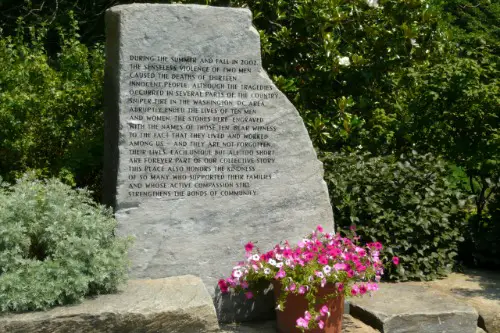
For three terrifying weeks in October 2002, people in the Washington, D.C. area were afraid to go outside. Two snipers, John Allen Muhammad and Lee Boyd Malvo, randomly targeted and killed ten people while injuring three others. The seemingly random shootings had people scared to pump gas, walk in parking lots, or do basic errands. News channels provided constant updates, and the nation watched in horror as law enforcement hunted for the killers.
After the snipers were caught, the attacks quickly faded from the public spotlight. The randomness and psychological impact of the shootings made them a unique kind of terrorism, yet they’re rarely discussed today. Many younger Americans don’t even know the story, despite how shocking it was at the time. In a world where mass shootings have sadly become more common, the D.C. sniper case has become just another tragedy lost in history.


